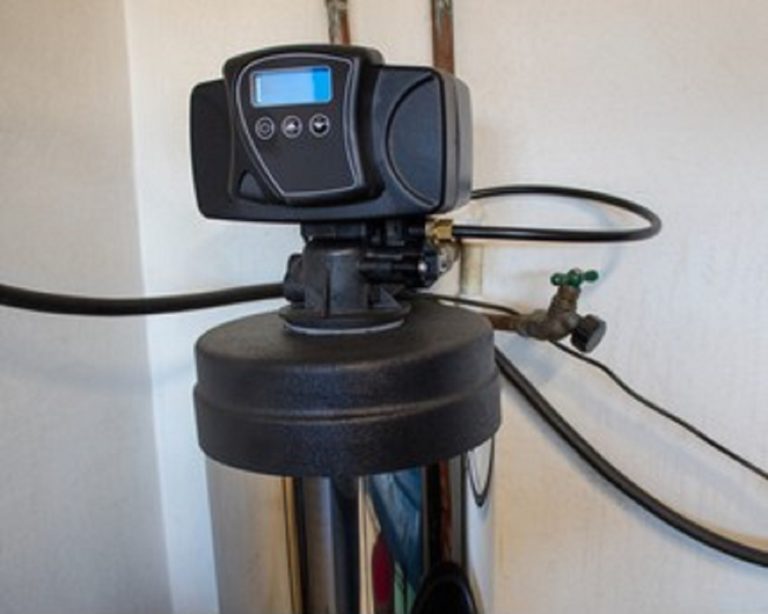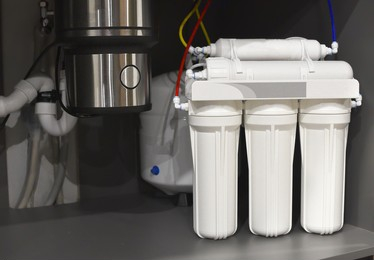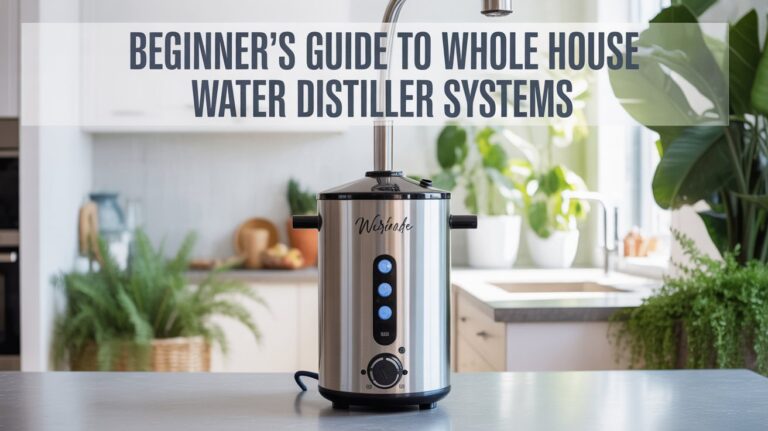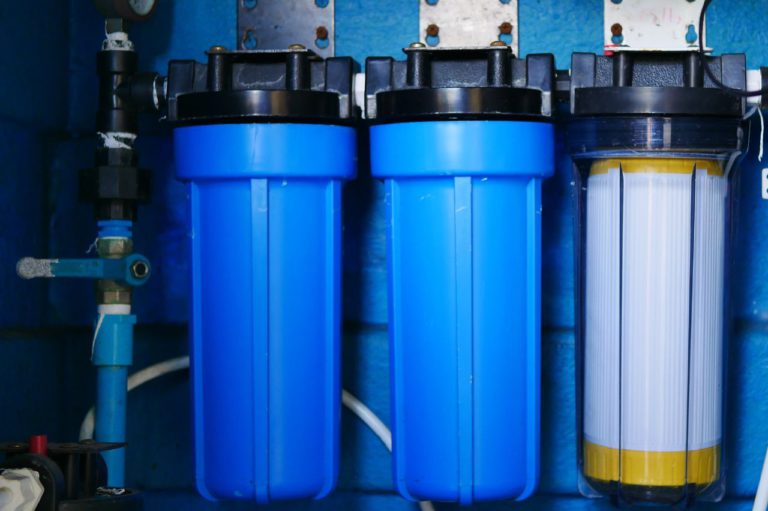Reverse Osmosis or Distilled – Which Type is Best?
Choosing the best water filtration method can be tough. Two top choices are reverse osmosis and distilled water. Each has its own pros and cons. We’ll explore the science behind these methods to help you pick the best one for you.

Looking for a way to clean your drinking water? Want pure water? Knowing the difference between reverse osmosis and distilled water is key. By the end of this article, you’ll know which method is best for you.
Key Takeaways
- Reverse osmosis is a popular water filtration method that removes contaminants from water
- Distilled water is another effective method that involves boiling and condensing water to remove impurities
- Both methods have their own set of benefits and drawbacks
- Understanding the science behind reverse osmosis and distilled water is essential to making an informed decision
- The best water filtration method for you will depend on your specific needs and preferences
- Reverse osmosis and distilled water can both be effective ways to remove contaminants and improve the taste and quality of your water
Understanding Water Purification Basics
Choosing between ro vs distilled water starts with knowing how water is purified. Water purification removes harmful stuff from water, making it safe to drink. Reverse osmosis and distillation are two main ways to purify water.
The main aim of water purification is to get clean water. Pure water is key for our health, stopping water-borne diseases and keeping us well. In the U.S., having clean drinking water is a big deal. Knowing how water is purified helps us pick the right water to drink.
There are many ways to purify water, like reverse osmosis and distillation. Each method has its own good and bad points. Knowing the differences between ro and distilled water helps us choose the best one for us. Next, we’ll look into reverse osmosis and distillation more closely. We’ll see how well they remove bad stuff and affect water quality.
The Science Behind Reverse Osmosis and Distilled Water
It’s important to know how reverse osmosis and distillation work. Reverse osmosis uses a special membrane to clean water. This membrane lets water molecules through but blocks bigger particles like salt.
This method is great at removing many contaminants. It gets rid of dissolved solids, bacteria, viruses, and more. This makes the water safer and tastes better.
Reverse osmosis systems are easy to keep up and work well in many places. Distillation, on the other hand, boils water and then collects the steam. This steam is clean but takes more time and energy than reverse osmosis.
Here are some key differences between reverse osmosis and distillation:
- Contaminant removal: Reverse osmosis can remove a wider range of contaminants, including dissolved solids and microorganisms.
- Energy efficiency: Reverse osmosis is generally more energy-efficient than distillation.
- Cost: Reverse osmosis systems can be more expensive than distillation systems, but they are often more effective and longer-lasting.
In summary, reverse osmosis and distillation are complex but understanding them helps us make better choices. By looking at their pros and cons, we can pick the best way to get clean, safe water.
Comparing Purification Effectiveness
Two popular water purification methods are reverse osmosis and distillation. Both have benefits, like distilled water advantages of high purity and no contaminants. We’ll look at how each method removes contaminants and the water’s mineral content.
It’s important to know what each method can remove. Reverse osmosis gets rid of dissolved solids, bacteria, and viruses. Distillation is great at removing volatile organic compounds and other high-boiling impurities.
- Reverse osmosis can remove up to 99% of contaminants, including dissolved solids and microorganisms.
- Distillation can remove up to 100% of contaminants, including volatile organic compounds and other impurities.
- The mineral content of the water can vary significantly depending on the method used, with reverse osmosis often removing beneficial minerals along with impurities.
Choosing between reverse osmosis and distillation depends on your needs. By understanding the comparison of ro and distilled water, you can decide what’s best for you.
Installation and Maintenance Requirements
When looking at water purification, reverse osmosis stands out as a top choice. To figure out which is better for water purification, we need to look at the setup and upkeep of both reverse osmosis and distillation systems. Getting these systems installed right is key to their success.
Setting up these systems requires the right tools. Reverse osmosis needs a pre-filter, a membrane, and a post-filter. Distillation systems, however, need a distiller and a place to collect the water. Keeping these systems in good shape is also important to avoid problems like clogged filters or buildup.
Here are some important maintenance tasks to keep in mind:
- Change filters regularly to avoid clogs and keep the system working well
- Inspect and clean the system parts to stop scaling and bacteria growth
- Watch how the system performs to make sure it’s making clean water

For upkeep, reverse osmosis systems usually need new filters every 6-12 months. Distillation systems might need descaling every 3-6 months. Knowing how to set up and maintain these systems helps people choose the best option for their needs.
Cost Analysis: Reverse Osmosis vs Distilled Water Systems
Choosing a water filtration system involves looking at the cost. Both reverse osmosis and distilled water systems have different costs. This includes the initial price and ongoing expenses. We’ll explore the costs of each method to help you decide which is best for you.
The cost of a reverse osmosis system can be between $200 and $1,000. This depends on the system’s quality and brand. A distilled water system can cost between $300 and $1,500.
Initial Investment Comparison
- Reverse osmosis system: $200 – $1,000
- Distilled water system: $300 – $1,500
Looking at long-term costs, reverse osmosis systems are often cheaper. They need replacement filters, which cost about $50 to $100 a year. Distilled water systems use more energy, which can raise your electricity bill. Yet, some distilled systems are more energy-efficient, making them a better long-term choice.
Long-term Operating Costs
It’s important to think about how much energy each system uses. Reverse osmosis systems usually use less energy than distilled water systems. This makes them better for the environment. But, some distilled systems are designed to use less energy, reducing their environmental impact.
Energy Consumption Differences
The choice between reverse osmosis and distilled water systems depends on your needs and budget. By looking at the initial cost, ongoing expenses, and energy use, you can choose wisely. Whether you pick a reverse osmosis or a distilled water system, you’ll get clean, pure drinking water.
Environmental Impact Considerations
When looking at ro vs distilled water purification, the environment matters a lot. Reverse osmosis uses more energy than distillation. This can lead to more greenhouse gas emissions.
Another important point is water waste. Reverse osmosis can waste up to 3 gallons for every gallon of clean water. Distillation, on the other hand, doesn’t waste water. This big difference can harm the environment, especially where water is scarce.
Here are some key environmental considerations for ro vs distilled water purification methods:
- Energy consumption: Distillation systems generally consume less energy than reverse osmosis systems.
- Water waste: Reverse osmosis systems can generate significant amounts of water waste, while distillation systems do not.
- Greenhouse gas emissions: The energy consumption of reverse osmosis systems can lead to higher greenhouse gas emissions.
In conclusion, the environmental impact of ro vs distilled water purification is very important. Knowing the differences helps us choose wisely. We aim to reduce environmental harm while getting clean drinking water.
Health Benefits and Potential Drawbacks
Choosing a water filtration system means knowing the good and bad of each option. Reverse osmosis is great at removing many contaminants like dissolved solids, bacteria, and viruses. It’s a top pick for many homes. Distilled water, on the other hand, is almost completely pure, making it perfect for very clean water needs.
Reverse osmosis water has several health benefits:
- It gets rid of harmful stuff like lead and arsenic.
- It tastes and smells better.
- It lowers the chance of getting sick from water.
Distilled water also has its own health pluses:
- It takes out all impurities, including minerals and electrolytes.
- It’s very pure, great for labs and medical use.
- It’s low-risk for waterborne illnesses.
But, there are health concerns with each method too. Reverse osmosis might take out good minerals. Distilled water can be too acidic and lack essential electrolytes.
Choosing between reverse osmosis and distilled water depends on what you need. Knowing the pros and cons helps you pick the best water filter for your home. This way, you can have safe and healthy water to drink.
| Water Filtration Method | Benefits | Drawbacks |
|---|---|---|
| Reverse Osmosis | Removes wide range of contaminants, improved taste and odor | Removes beneficial minerals, can be expensive |
| Distilled Water | Very pure water, low risk of waterborne illnesses | Can be acidic, lacking in essential electrolytes |
Best Applications for Each Method
Choosing between RO and distilled water depends on your needs. The right choice depends on the level of purification needed, the contaminants present, and how you plan to use the water.
Reverse osmosis is great for removing many contaminants. This makes it a top pick for making water safe to drink. Distillation, however, is best for lab and medical settings where very pure water is essential.
Here are some top uses for RO water:
- Drinking water
- Cooking and food preparation
- Aquariums and aquatic systems
Distillation is best for:
- Lab research and testing
- Medical facilities and hospitals
- Pharmaceutical manufacturing
Choosing between RO and distillation depends on your specific needs. Knowing the strengths and limits of each helps you pick the right system for your needs.

Reverse Osmosis or Distilled – Which Type is Best?
Choosing between reverse osmosis and distilled water depends on what you need. Each method has its own benefits and drawbacks. The right choice for you will depend on your personal preferences and needs.
Here are some key factors to consider when deciding between reverse osmosis and distilled water:
- Effectiveness: Reverse osmosis is great at removing many contaminants. Distilled water is made by boiling and then collecting the steam.
- Taste and odor: Reverse osmosis water tastes neutral. Distilled water might taste flat because it lacks minerals.
- Cost: Reverse osmosis systems cost more to buy and maintain than distilled water systems.
The choice between reverse osmosis and distilled water depends on your needs. If you want a reliable and easy system, reverse osmosis might be best. But if you’re watching your budget or prefer a natural taste, distilled water could be better.
Think about these points and the pros and cons of each system. This will help you make a smart choice for your needs.
Conclusion
Choosing the right water filtration method is key. The debate between ro vs distilled water is ongoing. Each has its own benefits and drawbacks. It’s important to look at how well each method removes contaminants and makes water safe to drink.
Think about the contaminants in your water. Reverse osmosis removes many, like dissolved solids and bacteria. Distilled water is clean but might not have all the minerals you need. The best choice depends on your specific needs and what you prefer.
- How well it removes contaminants
- The cost of maintenance and replacing parts
- How much energy it uses and its environmental impact
- If it keeps essential minerals in the water
In the end, whether to choose ro vs distilled water depends on what you need and like. By weighing the pros and cons, you can pick the best water filter for you or your family.
Final Thoughts
Both reverse osmosis (RO) and distilled water have their own benefits. The choice between them depends on what you need. RO systems remove many contaminants, making water safe for drinking and cooking.
Distilled water, on the other hand, is pure and free of minerals. It’s great for medical equipment, batteries, and lab work. Think about what you need before deciding.
RO systems are good for everyday water purification. Distilled water is better for special uses. Choose the system that fits your needs best.
Frequently Asked Questions
What is reverse osmosis?
Reverse osmosis is a way to clean water. It uses a special membrane to filter out bad stuff. This leaves clean water behind.
What is water distillation?
Water distillation heats water to turn it into steam. This steam then cools down and turns back into clean water. This method removes impurities.
What are the benefits of using reverse osmosis or distilled water?
Both methods can make water taste better and be healthier. They remove bad stuff from water. The best choice depends on your needs and local water quality.
How do reverse osmosis and distilled water differ in terms of purification effectiveness?
Reverse osmosis is better at removing many contaminants, like minerals and metals. Distilled water is very pure but also removes good minerals.
What are the installation and maintenance requirements for reverse osmosis and distillation systems?
Reverse osmosis systems need more setup and upkeep, like changing filters. Distillation systems are simpler but still need regular cleaning.
How do the costs of reverse osmosis and distillation systems compare?
Reverse osmosis systems cost more upfront but might save money in the long run. This is because they use less energy and need less maintenance. The cost depends on the system’s size and energy efficiency.
What are the environmental considerations for reverse osmosis and distillation systems?
Reverse osmosis systems can waste more water with contaminants. Distillation uses more energy. Think about the environment when choosing a system.
What are the potential health benefits and drawbacks of using reverse osmosis or distilled water?
Reverse osmosis water can be healthier by removing many contaminants. But, it might also take out good minerals. Distilled water is very pure but lacks essential minerals. Choose based on your health needs.
When is each method best suited for use?
Use reverse osmosis for whole-home water filtration. It’s good at removing many contaminants. Distilled water is better for specific uses, like medical equipment or areas with lots of impurities.







